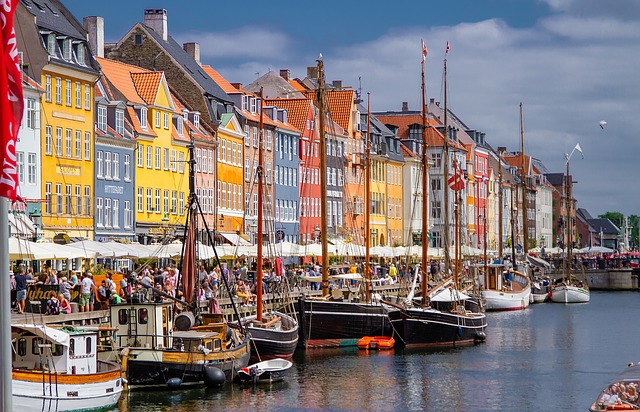Nyhavn
Nyhavn is the most photographed attraction in Copenhagen. Leaving Amalienborg behind and moving south through the sumptuous street of Amaliegade you’ll soon come across the harbor canal of Nyhavn. Nyhavn is typically Danish.
For 450 years the small town of Copenhagen did not extend its borders. In 1617, King Christian the Fourth established Christianshavn thus extending the town’s framework.
The development of the old capital city began and in 1671 King Christian Fifth started the excavation of the “New Harbor”. Since that time the artificial canal for more than 300 years has been the framework of pulsating life. Public houses, merriment, and ‘generous’ women have always been Nyhavn’s character.


Throughout the years the harbor’s picturesque houses have been the home of world-renowned artists like H C Andersen, who once lived in number 67, and several ballet artists and poets. Looking down at Nyhavn one can be reminded of H G F Holms’s meticulous watercolors.
The artist lived in number 55, he was named ‘Fattigholm’ (‘Poor Holm’). He died in 1861, and like many other artists became famous after his death. Holms’s paintings of streets and houses in Copenhagen are exhibited in museums and are considered very precious. ‘Poor Holm’ and other artists of the time visited the confectioner that was located on Store Strandstraede.
Hans Christian Andersen, who in his lifetime was famed as a fairytale writer, also visited the confectioner. H C Andersen is probably the most famous of all Danes for his writing talent.
The district is extremely popular with tourists and locals alike as the main coastline promenade. The 18th-century mansions and wooden ships have become the picturesque backdrop for what is considered today the largest outdoor bar in Scandinavia.
Restaurants cafes and cozy eating places overlooking the canal offer a chance for relaxation and leisure walks along the seaside. Most importantly your camera will be filled with some of the most memorable pictures of the Danish capital.



